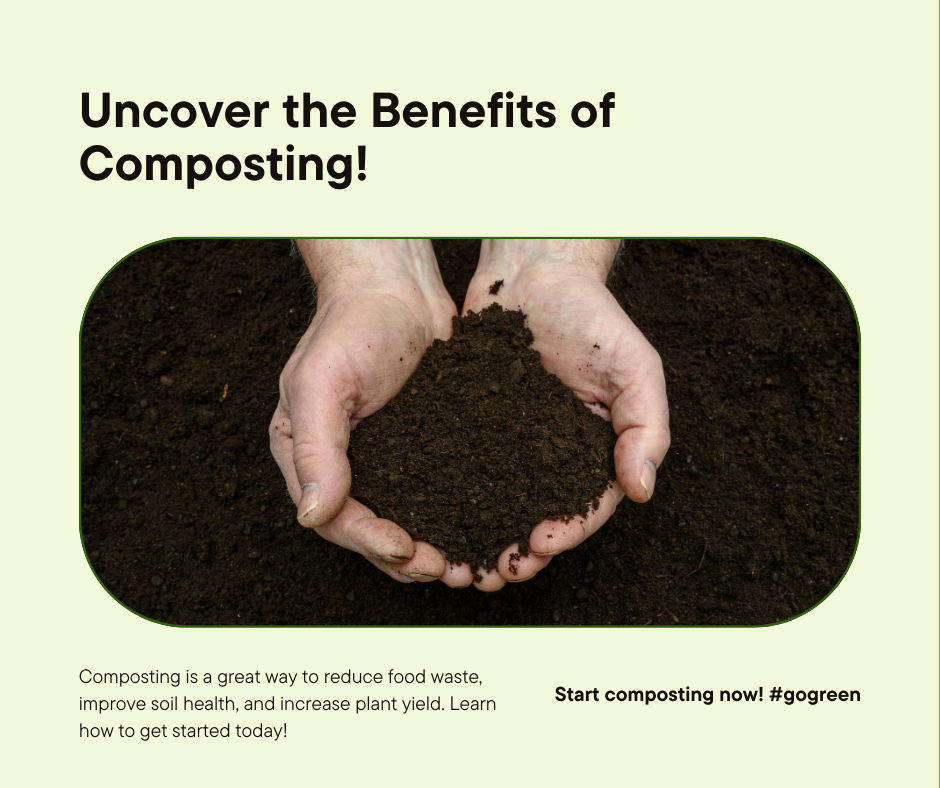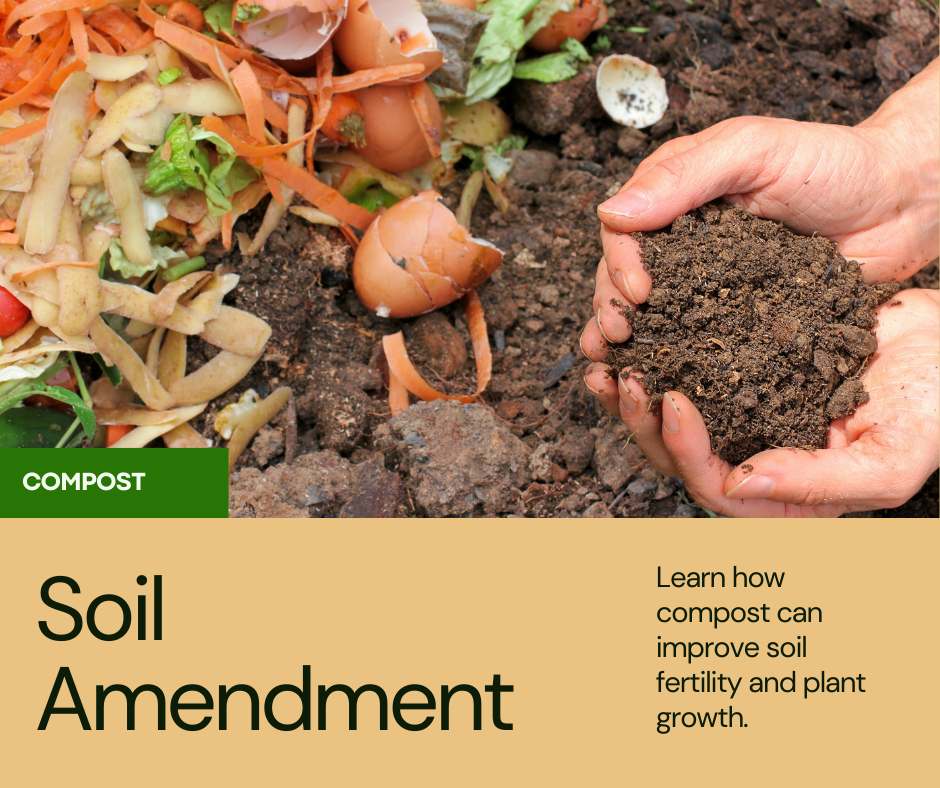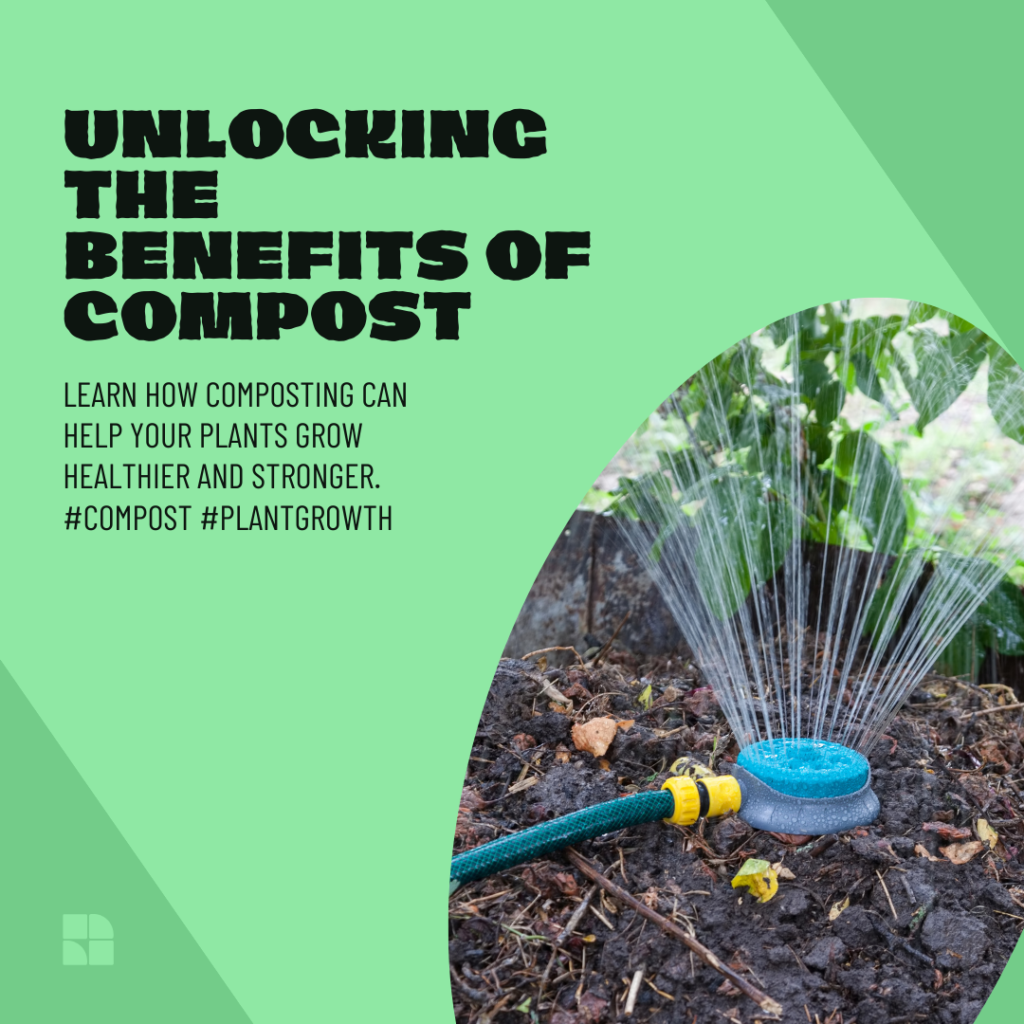
Welcome to our article on the benefits of composting for improved plant yield. If you’re an avid gardener or farmer, you already know the importance of healthy soil for optimal plant growth and productivity. Composting is a powerful tool that can help you achieve just that. By harnessing the natural process of decomposition, composting transforms organic waste materials into nutrient-rich soil amendments that nourish your plants and support their vitality.
Composting is a sustainable and environmentally friendly practice that not only reduces waste but also promotes soil health and fertility. Whether you have a small backyard garden or manage a large-scale farm, incorporating compost into your agricultural practices can have a significant impact on your plant yield, making it an essential part of any successful gardening or farming effort.
In this article, we will explore the importance of composting in agriculture and delve into the various benefits it offers for soil health. We will also discuss different types of composting, key components necessary for successful composting, and techniques to maximize its effectiveness. Furthermore, we will provide a list of organic waste materials suitable for composting and explain how compost can be applied as a soil amendment.
Key Takeaways:
- Composting is an effective practice for improving plant yield by enhancing soil health.
- Composting reduces waste, promotes sustainability, and reduces the need for chemical fertilizers.
- Benefits of composting include improved soil structure, increased water retention, and enhanced nutrient availability for plants.
- There are various composting techniques to choose from, such as aerobic, anaerobic, and vermicomposting.
- Organic waste materials like fruit and vegetable scraps, yard waste, coffee grounds, and eggshells are suitable for composting.
Importance of Composting in Agriculture
In the realm of agriculture, composting plays a pivotal role in fostering sustainability, reducing reliance on chemical fertilizers, and ensuring long-term soil health. By reutilizing organic waste materials, this eco-friendly practice presents numerous benefits for both farmers and the environment.
Composting addresses the pressing issue of waste management by diverting organic materials from landfills and transforming them into a valuable resource. This, in turn, minimizes greenhouse gas emissions and fosters a circular economy mindset.
By embracing composting in agriculture, you:
- Reduce the need for chemical fertilizers that can have detrimental effects on soil health and water quality.
- Promote sustainable farming methods that enhance biodiversity and ecological balance.
- Improve soil fertility and structure, which are vital for plants’ nutrient uptake and overall growth.
These benefits not only contribute to better crop yields but also help mitigate the environmental impact of conventional agricultural practices.
“Composting is more than just recycling organic waste. It’s a game-changer in agriculture, a key component of sustainable farming that supports both productivity and environmental stewardship.” – Farmer Emma Sullivan
Agricultural professionals and researchers have increasingly recognized the importance of composting, leading to innovative techniques and efficient compost management strategies. By leveraging organic waste materials, farmers can create their own nutrient-rich compost, tailored to the needs of their crops.
Ultimately, the integration of composting into agricultural practices paves the way for a more resilient and environmentally conscious food production system, ensuring a sustainable future for both farmers and consumers alike.
| Benefits of Composting in Agriculture |
|---|
| Reduces reliance on chemical fertilizers |
| Promotes sustainable farming methods |
| Enhances soil fertility and structure |
| Improves nutrient uptake and plant growth |
| Minimizes environmental impact |
With the importance of composting in agriculture established, let’s delve deeper into the specific benefits it offers for soil health in the following section.
Benefits of Composting for Soil Health
Composting is not only an eco-friendly practice but also a beneficial one for promoting soil health. When you incorporate compost into your soil, you unlock a range of advantages that contribute to a thriving and vibrant growing environment. Let’s explore some of the key benefits that composting offers for soil health:
Improved Soil Structure
Compost works wonders in improving soil structure. Its organic matter helps to create a crumbly and well-aerated soil texture, allowing for better root penetration and nutrient absorption. By enhancing the soil’s physical properties, composting creates an ideal foundation for robust and healthy plant growth.
Increased Water Retention Capacity
Incorporating compost into your soil can significantly increase its water retention capacity. The organic matter in compost acts like a sponge, absorbing and holding moisture. This leads to improved water availability for plants, especially during periods of drought or dry spells. With better water retention, your plants have a higher chance of withstanding challenging environmental conditions.
Enhanced Nutrient Availability
Compost is a nutrient-rich amendment that contributes to the overall fertility of the soil. As compost decomposes, it releases essential nutrients like nitrogen, phosphorus, and potassium, along with a host of micronutrients. This nutrient availability ensures that your plants receive a steady supply of the elements they need for healthy growth and development.
Reduced Erosion and Soil Pollution
Composting plays a vital role in reducing erosion and preventing soil pollution. When you apply compost to your soil, it forms a protective layer that helps to stabilize the soil structure. This layer minimizes erosion caused by wind and water, preventing the loss of valuable topsoil. Additionally, composting promotes sustainable farming practices by reducing the need for chemical fertilizers that can contribute to soil pollution.
By harnessing the benefits of composting, you can cultivate a healthy and thriving soil ecosystem that fosters optimal plant growth. The integration of compost into your gardening or farming practices ensures that your soil remains fertile and resilient, promoting sustainable and environmentally friendly agriculture. So why wait? Start composting today to unlock these incredible benefits for your soil health and the vitality of your plants.
| Benefits of Composting for Soil Health |
|---|
| Improved Soil Structure |
| Increased Water Retention Capacity |
| Enhanced Nutrient Availability |
| Reduced Erosion and Soil Pollution |
Types of Composting
When it comes to composting, there are different methods you can choose from based on your needs and available resources. Understanding the various types of composting techniques can help you determine which approach suits you best. Let’s explore three common methods!
Aerobic Composting
Aerobic composting is a popular traditional method that relies on oxygen to break down organic materials. This process requires the compost pile to be turned regularly to ensure proper aeration and temperature control. The oxygen-rich environment supports the growth of aerobic microorganisms that decompose the organic matter efficiently. Aerobic composting is known for its ability to generate high-quality compost relatively quickly, typically within a few months.
Anaerobic Composting
Unlike aerobic composting, anaerobic composting involves the decomposition of organic matter in the absence of oxygen. This technique is ideal for those who prefer a low-maintenance approach, as it requires less turning and monitoring of the compost pile. Anaerobic composting is commonly used for large-scale operations or in situations where limited access to oxygen prevents aerobic decomposition. However, it generally takes longer to produce usable compost, often several months to a year.
Vermicomposting
Vermicomposting is a specialized composting method that utilizes worms to aid in the decomposition process. These diligent creatures consume organic waste materials and produce nutrient-rich castings, which are highly beneficial for plant growth. Vermicomposting is suitable for both indoor and outdoor settings and offers a compact and odor-free way to compost. It is often favored by homeowners, urban gardeners, and those with limited space.
Choosing the right composting method depends on factors such as your available time, resources, and specific goals. Whether you prefer a fast and efficient aerobic process, a low-maintenance anaerobic approach, or the use of worms for vermicomposting, all methods contribute to the creation of nutrient-rich compost that improves soil health and boosts plant growth.
Now that you’re familiar with the different types of composting, you can select the method that aligns best with your preferences and gardening needs. The next section will delve into the key components required for successful composting, helping you create an optimal composting environment.
Key Components of Composting

Successful composting requires the right combination of key components to create a rich, fertile environment for organic waste to decompose effectively. Understanding these essential elements is crucial for maximizing the quality and speed of the composting process.
The Carbon-to-Nitrogen Ratio
One of the key components of composting is achieving the proper carbon-to-nitrogen ratio in the compost pile. This ratio determines the rate at which organic materials break down and the overall quality of the resulting compost. The ideal ratio is approximately 30 parts carbon to 1 part nitrogen (30:1). Sources of carbon-rich materials include dried leaves, straw, and wood chips, while nitrogen-rich materials include fresh green waste, such as grass clippings and kitchen scraps.
A Balanced Mixture of Organic Waste Materials
In addition to the carbon-to-nitrogen ratio, achieving a balanced mixture of organic waste materials is crucial for successful composting. This ensures that the compost pile contains a variety of nutrients and microorganisms necessary for decomposition. By combining a mix of kitchen scraps, yard waste, and other organic materials, you can create a nutrient-rich environment that supports the growth of beneficial microorganisms.
Air, Water, and Microorganisms
Airflow and moisture are essential for fostering the growth of beneficial microorganisms that break down organic materials in the compost pile. Adequate air circulation helps prevent unpleasant odors and promotes the decomposition process, while maintaining the right moisture level (approximately 50-60% humidity) ensures a moist environment without becoming waterlogged. These factors, combined with the presence of microorganisms, create an optimal habitat for the breakdown of organic matter into nutrient-rich compost.
Composting is a delicate balance of art and science. Getting the carbon-to-nitrogen ratio right, incorporating a balanced mixture of organic waste materials, and creating an environment conducive to microbial activity are key components for successful composting.
| Key Components | Description |
|---|---|
| The Carbon-to-Nitrogen Ratio | An ideal ratio of carbon to nitrogen in the compost pile, approximately 30:1, to facilitate decomposition of organic materials. |
| A Balanced Mixture of Organic Waste Materials | A mix of kitchen scraps, yard waste, and other organic materials to provide a variety of nutrients and microorganisms for decomposition. |
| Air, Water, and Microorganisms | Adequate airflow, moisture, and the presence of beneficial microorganisms to support the breakdown of organic matter into nutrient-rich compost. |
Composting Techniques
When it comes to composting, employing the right techniques is essential to ensure a successful and efficient process. By implementing proper layering and turning of the compost pile, you can accelerate decomposition and create nutrient-rich compost for your plants.
Layering the Compost Pile
Properly layering your compost pile helps create the ideal environment for decomposition. Start with a layer of brown organic material, such as dry leaves or twigs, followed by a layer of green organic matter, like kitchen scraps or grass clippings. Repeat this layering process, ensuring a balanced mix of carbon-rich and nitrogen-rich materials.
Turning the Compost Pile
Regularly turning the compost pile is crucial for maintaining optimal conditions and promoting decomposition. Use a pitchfork or compost turner to aerate the pile, allowing oxygen to reach the microorganisms responsible for breaking down organic matter. Turning the pile also helps distribute moisture evenly, preventing dry or soggy areas.
Throughout the composting process, it’s important to monitor the temperature and moisture levels. The pile should ideally reach a temperature between 120 to 160°F (49 to 71°C) to facilitate the breakdown of organic materials. Additionally, maintaining the right moisture content, similar to a damp sponge, ensures that microorganisms thrive and decomposition occurs efficiently.
Effective compost management includes adding water when necessary, covering the pile during heavy rainfall, and regulating moisture levels to avoid excess dryness or saturation.
By mastering these composting techniques, you can create nutrient-rich compost to boost soil fertility and enhance plant growth. Remember to layer and turn your compost pile regularly, and monitor temperature and moisture levels for optimal results.
Organic Waste Materials Suitable for Composting
When it comes to composting, the choice of organic waste materials plays a crucial role in the success of your compost pile. By selecting the right materials, you can ensure that your compost is nutrient-rich and promotes healthy plant growth. Here are some organic waste materials that are perfect for composting:
Fruit and vegetable scraps: Leftover peels, cores, and scraps from your daily produce can be composted to provide essential nutrients. Remember to remove any stickers or non-compostable items before adding them to your compost pile.
Yard waste: Dried leaves, grass clippings, and small branches are excellent sources of carbon for your compost. They help balance the carbon-to-nitrogen ratio and improve the quality of your compost.
Coffee grounds: After your morning cup of joe, don’t throw away those spent coffee grounds! They are rich in nitrogen and also help increase the acidity of your compost, which is beneficial for certain plants.
Eggshells: Crushed eggshells not only add calcium to your compost but also help to deter pests like slugs and snails. Make sure to rinse them before adding them to your compost pile to remove any egg residue.
These organic waste materials provide a variety of nutrients and help maintain the balance of carbon and nitrogen in your compost pile, creating an ideal environment for decomposition and nutrient release. Incorporating a mix of these materials will result in nutrient-rich compost that will nourish your plants naturally.
Compost Application as a Soil Amendment

Incorporating compost into your soil can have significant benefits for your plants and overall soil health. Compost serves as a valuable soil amendment, improving soil structure, enhancing nutrient content, and promoting microbial activity. Whether you’re a gardener, farmer, or landscaper, understanding how to properly apply compost is essential for maximizing its benefits.
Improved Soil Structure
When compost is applied as a soil amendment, it helps to improve soil structure by enhancing its ability to hold and release nutrients, water, and air. The organic matter in compost acts as a binding agent, creating pore spaces in the soil that allow for better water infiltration and root penetration. This results in healthier root systems and improved overall plant growth.
Increased Nutrient Content
Compost is rich in essential nutrients that are released slowly over time, providing plants with a constant supply of nourishment. By applying compost to your soil, you’re enriching it with nutrients such as nitrogen, phosphorus, and potassium, as well as micronutrients like calcium, magnesium, and zinc. This nutrient-rich environment supports robust plant growth and helps prevent nutrient deficiencies.
Enhanced Microbial Activity
Compost is teeming with beneficial microorganisms that contribute to soil fertility and plant health. These microorganisms break down organic matter, releasing nutrients in a form that plants can readily absorb. When compost is applied as a soil amendment, it promotes the activity of these beneficial microbes, creating a thriving ecosystem in the soil that supports plant growth.
Optimal Time and Methods for Applying Compost
Compost can be applied at various times throughout the year, depending on your specific needs and climate conditions. It is generally best to apply compost in the spring or fall when soil temperatures are moderate and microbial activity is high. This allows the compost to integrate into the soil and benefit plants during their active growth periods.
There are several methods for applying compost, depending on the scale of your gardening or farming operation. Some common methods include top-dressing the soil surface with compost, incorporating it into the soil during planting, or using compost tea as a foliar spray. The chosen method will depend on the specific needs of your plants and the desired outcomes.
| Benefits of Compost Application as a Soil Amendment |
|---|
| Improved soil structure |
| Increased nutrient content |
| Enhanced microbial activity |
| Optimal time and methods for application |
Benefits of Compost for Plant Growth and Nutrient Uptake

Compost is a powerful natural fertilizer that offers numerous benefits for plant growth and nutrient uptake. When added to the soil, compost enriches it with essential nutrients, improves soil structure, and promotes overall plant vigor.
One of the primary advantages of using compost is its ability to enhance nutrient availability for plants. Compost contains a balanced combination of organic matter, such as nitrogen, phosphorus, and potassium, which are vital for plant growth. These nutrients are released slowly over time, ensuring a steady supply for optimal plant development.
Furthermore, compost promotes root development by improving soil structure. Its organic matter helps create a loose, crumbly soil texture that allows roots to penetrate and grow more easily. This encourages stronger root systems, enhancing nutrient uptake and water absorption capabilities. As a result, plants become more resilient to environmental stressors and exhibit improved overall health.
“Compost provides plants with the necessary nutrients and improves soil structure, ultimately leading to healthier, more productive crops.”
In addition to its nutrient-rich composition, compost also fosters beneficial microbial activity in the soil. These microorganisms break down organic matter and release nutrients in forms that are readily available to plants. They also contribute to the development of a stable soil structure, preventing erosion and promoting better water and air circulation.
The benefits of compost for plant growth are particularly evident in agricultural settings. Studies have shown that the application of compost to crops can significantly increase yields and improve crop quality. The incorporation of compost into the soil also reduces the reliance on synthetic fertilizers, contributing to sustainable farming practices.
Here are some key benefits of compost for plant growth and nutrient uptake:
- Improved nutrient availability
- Enhanced root development
- Increased microbial activity
- Optimized soil structure
- Higher crop yields
- Better crop quality
Overall, compost is a valuable resource for farmers, gardeners, and anyone looking to enhance plant growth and improve soil health. Its nutrient-rich composition, ability to promote root development, and support beneficial microbial activity make it an essential component in sustainable agriculture.
Successful Examples of Agricultural Practices with Compost
Witness the transformative power of composting in agriculture through these real-world success stories. These farms and gardens have embraced composting as an integral part of their agricultural practices, leading to remarkable improvements in soil health, crop yields, and overall profitability.
Smith Family Farm: A Soil Enrichment Success Story
The Smith Family Farm, located in the heartland of organic farming, has achieved remarkable success by incorporating compost into their agricultural practices. By using high-quality compost as a soil amendment, they have witnessed a substantial improvement in soil fertility and structure, resulting in healthier plants and increased yields.
This image showcases the lush green fields of the Smith Family Farm, a testament to the effectiveness of composting in agricultural practices.
“Compost has been a game-changer for us. It has transformed our depleted soil into a thriving ecosystem, offering a perfect balance of nutrients and organic matter. Our crops have never been healthier, and we have noticed a significant reduction in the need for chemical fertilizers and pesticides.”
Jackson Gardens: Boosting Crop Resilience with Compost
Jackson Gardens, a leading organic vegetable farm, has embraced composting as a key practice to enhance crop resilience and sustainability. By carefully incorporating compost into their soil, they have fortified its structure and water-holding capacity, reducing the risk of erosion and drought stress. This has resulted in more robust and productive crops, allowing Jackson Gardens to meet the growing demand for organic produce.
Take a glimpse at Jackson Gardens, where vibrant and healthy vegetables thrive, thanks to their strategic use of compost.
“Composting has been pivotal in our pursuit of sustainable agriculture. It has improved the overall health of our soil, ensuring our crops withstand various environmental challenges, and providing nutritious, pesticide-free food for our local community.”
Davis Orchards: Revitalizing Fruit Trees with Compost
Davis Orchards has reaped the benefits of composting by revitalizing their fruit trees. By incorporating compost as a natural fertilizer around the base of their trees, they have witnessed increased fruit production and improved tree health. The nutrient-rich compost has supplied essential minerals and beneficial microorganisms to the soil, promoting vigorous growth and disease resistance.
Marvel at the bountiful harvest of Davis Orchards, where thriving fruit trees are a testament to the rejuvenating powers of compost.
“Compost has been a game-changer for our orchard. Our trees are healthier than ever, and the quality and quantity of our harvest have skyrocketed. Composting has allowed us to sustainably nourish our soil and grow premium-quality fruit for our customers.”
These successful examples serve as inspiration for farmers and gardeners alike, highlighting the immense potential of composting in agricultural practices. By harnessing the power of compost, individuals can enhance soil health, boost crop yields, and contribute to a more sustainable and profitable farming future.
FAQ
Q. What is composting?
A. Composting is a natural process that breaks down organic waste materials into nutrient-rich compost, which can be used as a soil amendment for plant growth.
Q. Why is composting important in agriculture?
A. Composting is important in agriculture because it helps reutilize organic waste materials, reduces the need for chemical fertilizers, and promotes sustainable farming methods. It also improves soil fertility and minimizes environmental impact.
Q. What are the benefits of composting for soil health?
A. Composting enhances soil health by improving soil structure, increasing water retention capacity, and enhancing nutrient availability for plants. It also reduces erosion and prevents soil pollution.
Q. What are the different types of composting?
A. There are various types of composting methods, including traditional methods such as aerobic and anaerobic composting. Vermicomposting, which utilizes worms to break down organic materials, is also a popular technique.
Q. What are the key components of composting?
A. The key components of composting include the carbon-to-nitrogen ratio in the compost pile, a balanced mixture of organic waste materials, and the presence of air, water, and microorganisms.
Q. What are some organic waste materials suitable for composting?
A. Fruit and vegetable scraps, yard waste, coffee grounds, eggshells, and other plant-based materials are suitable for composting. These materials contribute valuable nutrients to the compost.
Q. What are some composting techniques?
A. Composting techniques include proper layering and turning of the compost pile. It is important to monitor and maintain the right temperature and moisture levels throughout the composting process.
Q. How is compost used as a soil amendment?
A. Compost can be applied as a soil amendment by incorporating it into the soil. This improves soil structure, increases nutrient content, enhances microbial activity, and promotes overall soil health.
Q. What are the benefits of compost for plant growth and nutrient uptake?
A. Compost enriches the soil with essential nutrients, promotes root development, and enhances overall plant vigor. It increases crop yields and improves the quality of plants by providing a balanced and nutrient-rich environment.
Q. Can you provide examples of successful agricultural practices with compost?
A. There are numerous examples of farms and gardens that have successfully integrated composting into their practices. These include improved soil health, increased crop yields, and enhanced profitability.
Q. What is the future potential and expansion of composting in agriculture?
A. The potential for further expansion of composting practices in agriculture is significant. It offers a sustainable solution for improving soil health, increasing crop productivity, and reducing environmental impact.
Conclusion
Composting plays a vital role in agriculture, offering a myriad of benefits to both farmers and the environment. Throughout this article, we have explored the importance of composting, the benefits it brings to soil health, and the various techniques and methods involved in the process.
As we conclude, it is evident that composting holds substantial future potential for the expansion of sustainable agricultural practices. By incorporating compost into farming systems, we can promote long-term soil fertility, reduce the reliance on chemical fertilizers, and minimize environmental impact.
The adoption of composting in agriculture is not only advantageous for crop yields and plant growth but also contributes to the overall health of our planet. Through widespread implementation, we can enhance soil health, preserve valuable natural resources, and work towards achieving a more sustainable agricultural future.
















